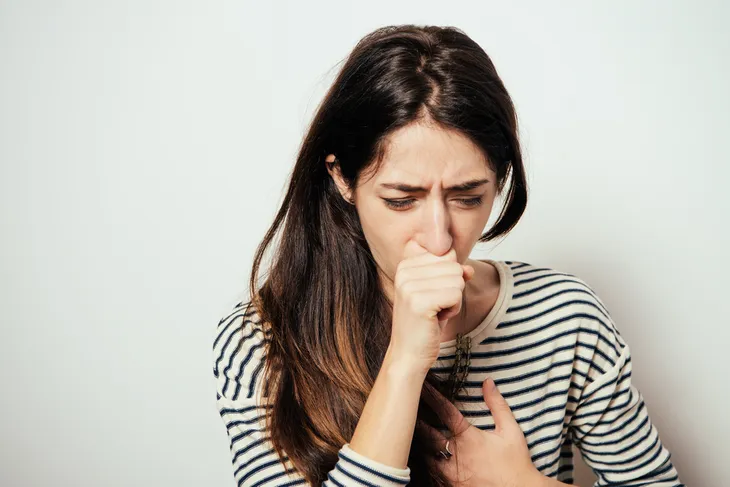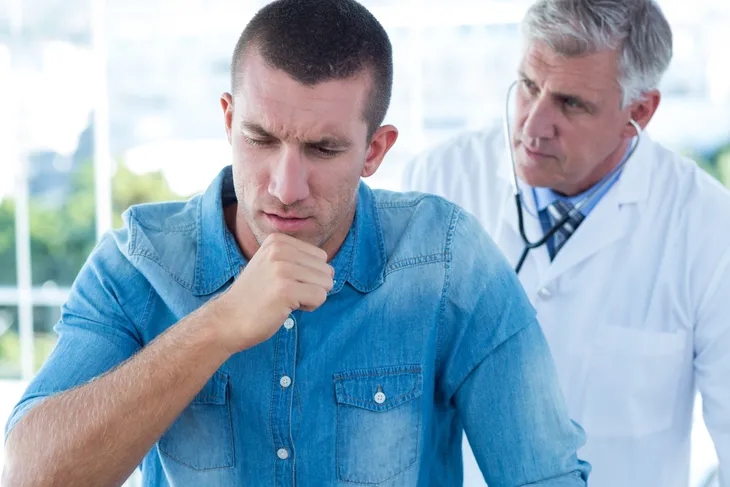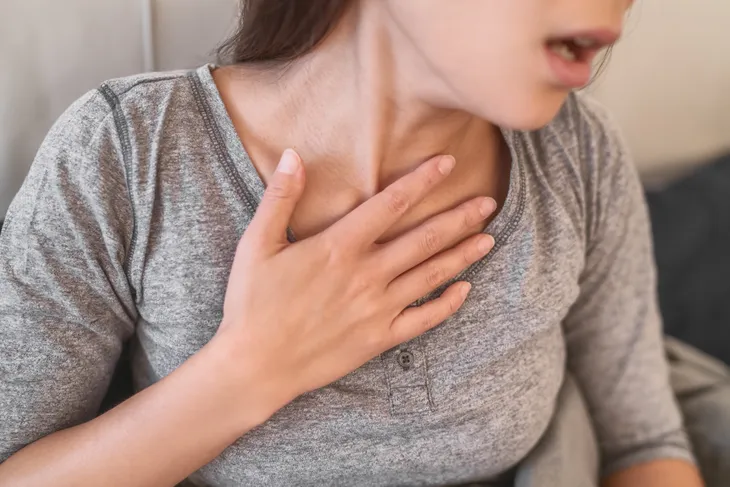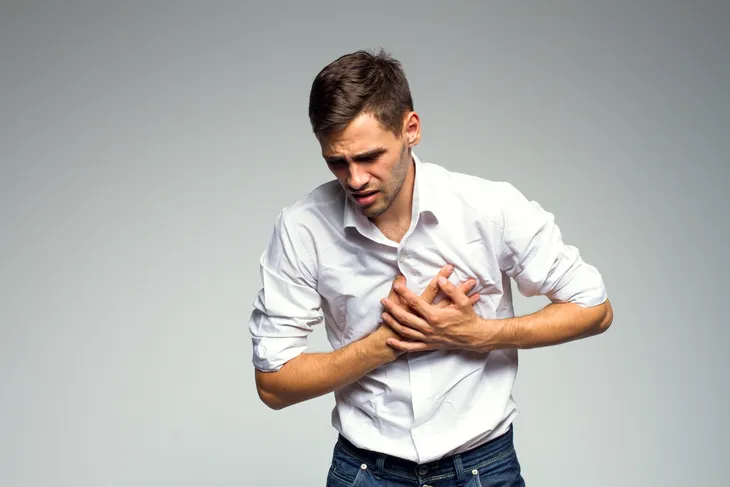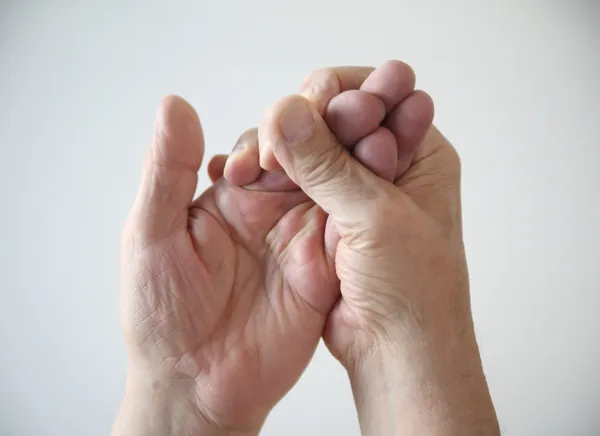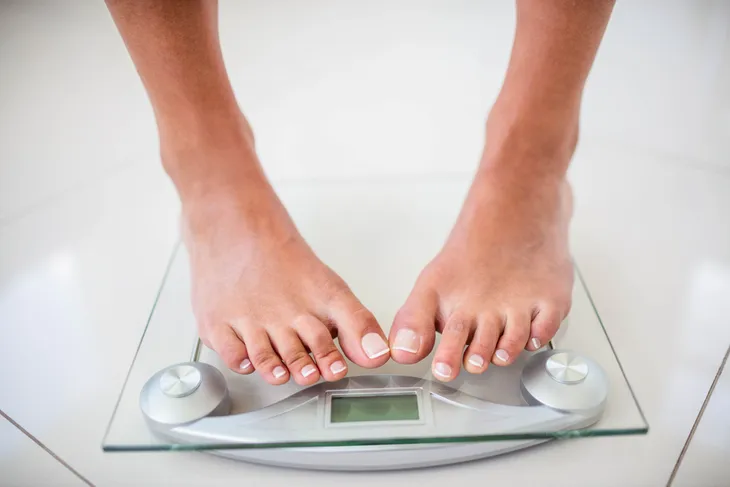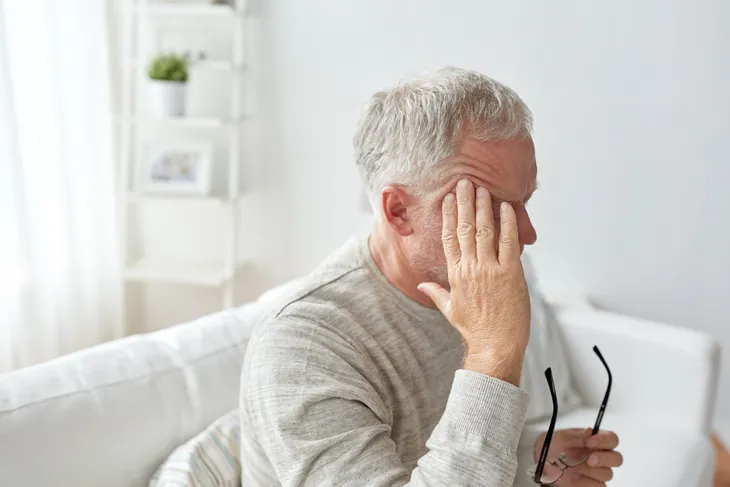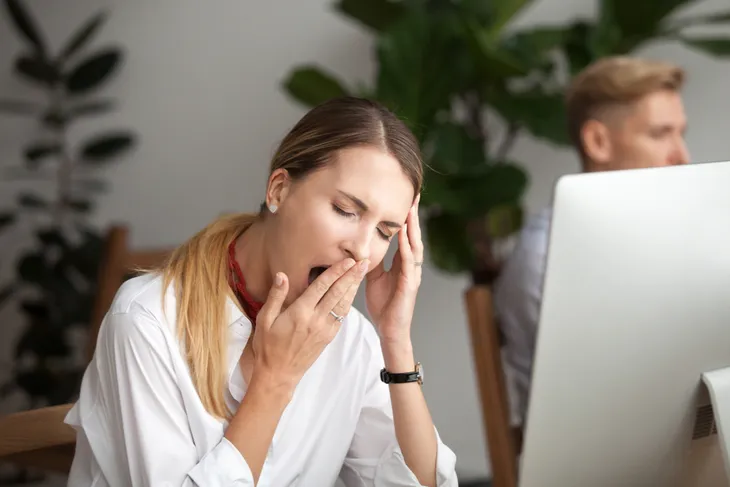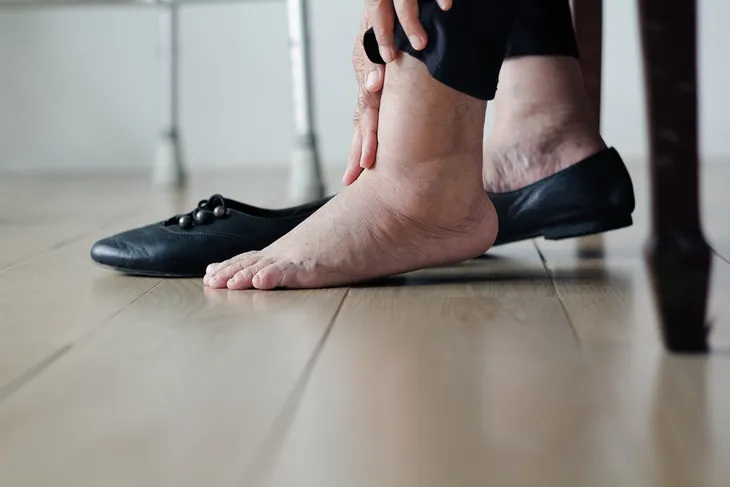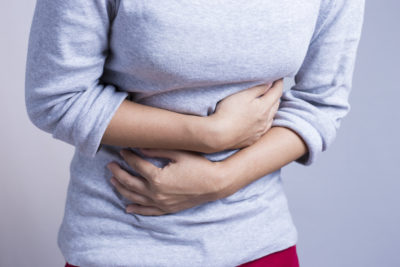Chronic obstructive pulmonary disease (or COPD) most commonly results from smoking. COPD occurs when the airways in your lungs become inflamed due to excess mucus buildup. As a result, the airways become blocked and oxygen intake is depleted.
An awareness of the early warning signs of COPD can be the first step to prevent the condition from worsening. If left untreated, COPD puts you at higher risk for viral or bacterial lung infections and can result in the complete loss of lung function.
If you have one or several of the following COPD symptoms, seek medical attention immediately…
1. Shortness of Breath
COPD causes dyspnea, also known as shortness of breath. It is typically one of the first symptoms to show up, which is why it can sometimes be overlooked. While it’s different for many people, most COPD patients describe it as “feeling like gasping or labored breathing. Other people describe the sensation of ‘air hunger,’” writes VeryWell Health.
In the beginning, it might only show up during exercise, but as the condition progresses, it will become worse and begin appearing after activities that weren’t tiring before, such as walking. “As the disease progresses you can get shortness of breath from even a small activity like walking to your bathroom or climbing up the stairs, or walking to your house,” says Haven Shah, MD, a pulmonary critical care specialist at Advocate Lutheran General Hospital in Park Ridge, Illinois, to Reader’s Digest.
2. Chronic Cough
A chronic cough is another common and well known symptom of COPD. We’ve all had a cough before, but what’s a “chronic” cough? Medically, it’s defined as a cough that lasts for longer than 8-weeks, says VeryWell Health. The coughing begins as a result of the swelling and inflammation in the airways that is caused by COPD. Similar to shortness of breath, coughing is one of the first symptoms to show up and is often overlooked, especially in smokers. People will often chock it up to being a “smoker’s cough,” allergies, or their environment.
“The cough comes on slowly and can be a productive cough,” says Brian Stein, MD, Assistant Professor of Medicine at Rush University Medical Center in Chicago, when talking to Reader’s Digest. It’s either dry or will produce mucus, which we will get to next. Remember, while coughing is the body’s natural way of protecting the airways, especially from irritants such as cigarette smoke, a persistent and chronic cough means the lungs aren’t functioning properly.
3. Coughing Up Phlegm
Another common early warning sign of COPD is increased mucus. Our body produces mucus to protect or trap inhaled irritants. Someone who smokes tobacco or other irritants will have more mucus production in their body than the average person, notes Healthline.
When it comes to COPD, it’s typically at its worst in the morning. You’ll be constantly trying to clear your throat because there is excess mucus in your lungs, says Mayo Clinic. You might also have a cough that is producing mucus that is white, yellow, clear, or even greenish in color.
This mucus or phlegm is referred to as “sputum,” which Reader’s Digest explains is just a mixture of saliva and mucus. “Often the persistent cough is worse in the morning, but can get worse throughout the day,” says Dr. Stein.
4. Wheezing
COPD can cause a wheezing, or whistling sound, during inhalation and exhalation. According to VeryWell Health, this wheezing noise is due to the narrowing or even a blockage in the airway. It might also cause other strange sounds that can be picked up with a stethoscope.
5. Chest Tightness
Someone with COPD may also experience chest tightness. Reader’s Digest points out, unlike difficulty breathing, this isn’t specific to COPD but can happen. The chest tightness might also be accompanied by shortness of breath. “When people describe chest tightness they might feel like they can’t get a breath in,” says Dr. Stein to the source.
VeryWell Health says the chest tightness feels like a pressure on the chest wall, which will also make breathing difficult. “Chest tightness may be present when there is an infection in your lungs and it may make deep breathing painful (pleuritic chest pain), causing respiration to be short and shallow,” writes the source.
6. Blue Lips and Nails
Blue lips and nails are a common sign in the later stages of COPD, says Healthline. Anyone who has COPD and is exhibiting these signs needs to seek medical care as soon as possible.
7. Unintentional Weight Loss
Most of us work really hard to lose weight or even maintain our weight. So, when weight loss starts happening on its own without any explanation, it’s concerning. While weight gain is actually more common in the early stages of COPD because the individual will be unable to exercise due to difficulty breathing, it will soon turn into extreme weight loss and loss of appetite. These symptoms can be quite serious and even lead to malnutrition in extreme cases.
“Both appetite loss and unintentional weight loss are symptoms that warrant further investigation, as they may also indicate that other diseases are present, such as lung cancer or pulmonary tuberculosis,” writes VeryWell Health. The source also notes that eating healthy is extremely important for people with COPD. If you want to know more, check out this article on 8 Healthy Eating Tips for COPD Patients.
COPD causes air to become trapped in the lungs, because air isn’t released properly. “When you trap air, it’s as if you’re breathing on top of a full lung. Expanding in the chest and going back to baseline, the resting state, becomes very difficult. That increased work of breathing can lead to weight loss,” says Umur Hatipoglu, MD, when talking to Reader’s Digest.
8. Headaches
Individuals with COPD will suffer from headaches, particularly in the mornings. This is again due to the lack of oxygen in the lungs. “When your lungs don’t work properly, you don’t get enough oxygen while you are asleep, and carbon dioxide builds up in your blood,” writes Everyday Health. Lightheadedness and dizziness will accompany these morning headaches.
9. Trouble Sleeping
People who have COPD will have trouble sleeping because their airways tighten at night. This can become especially uncomfortable during the early hours of the morning when the airways are at their smallest in diameter.
“When you have COPD, you don’t have a lot of reserve; so in the morning as the airways get tighter or smaller, you may become symptomatic and that will wake you up,” says Dr. Hatipoglu, Medical Director of the Center for Comprehensive Care for COPD at the Respiratory Institute at the Cleveland Clinic in Ohio to Reader’s Digest.
10. Extreme Fatigue
We all get tired from time to time, especially if we didn’t get enough sleep the night before. However, the fatigue associated with COPD is extreme and usual. You’ll be more tired than normal, and it’ll be more like a lack of energy or stamina than just some weary eyes. “Overall, fatigue is three times more common in people with lung disease than in those without it. While dyspnea is the most worrisome symptom among those with COPD, fatigue can be one of the most bothersome,” writes VeryWell Health.
Reader’s Digest talked to Dr. Stein who explains the fatigue might come from overexertion, because patients have to work so much harder to breathe. Since there are many reasons and even health conditions that cause fatigue, you should evaluate whether you’re experiencing other symptoms on this list and consult with a doctor to determine if COPD is the cause.
11. Swollen Ankles
Healthline explains that another symptom of COPD is swelling of the feet, ankles or legs, but this more commonly occurs in the later stages.
The swelling occurs because the blood vessels don’t get enough oxygen, which puts a strain on the heart, says Everyday Health. “This strain can cause fluid to build up, making your ankles, feet, or legs swell up. The swelling can also be caused by damage to your lungs,” writes the source.
12. Chronic or Recurrent Respiratory Infections
People who have COPD will frequently suffer from chronic or recurrent respiratory infections, such as colds, the flu, or even pneumonia. The reason for this is because the lungs aren’t functioning sufficiently, so it makes them more susceptible to these infections, says VeryWell Health.



